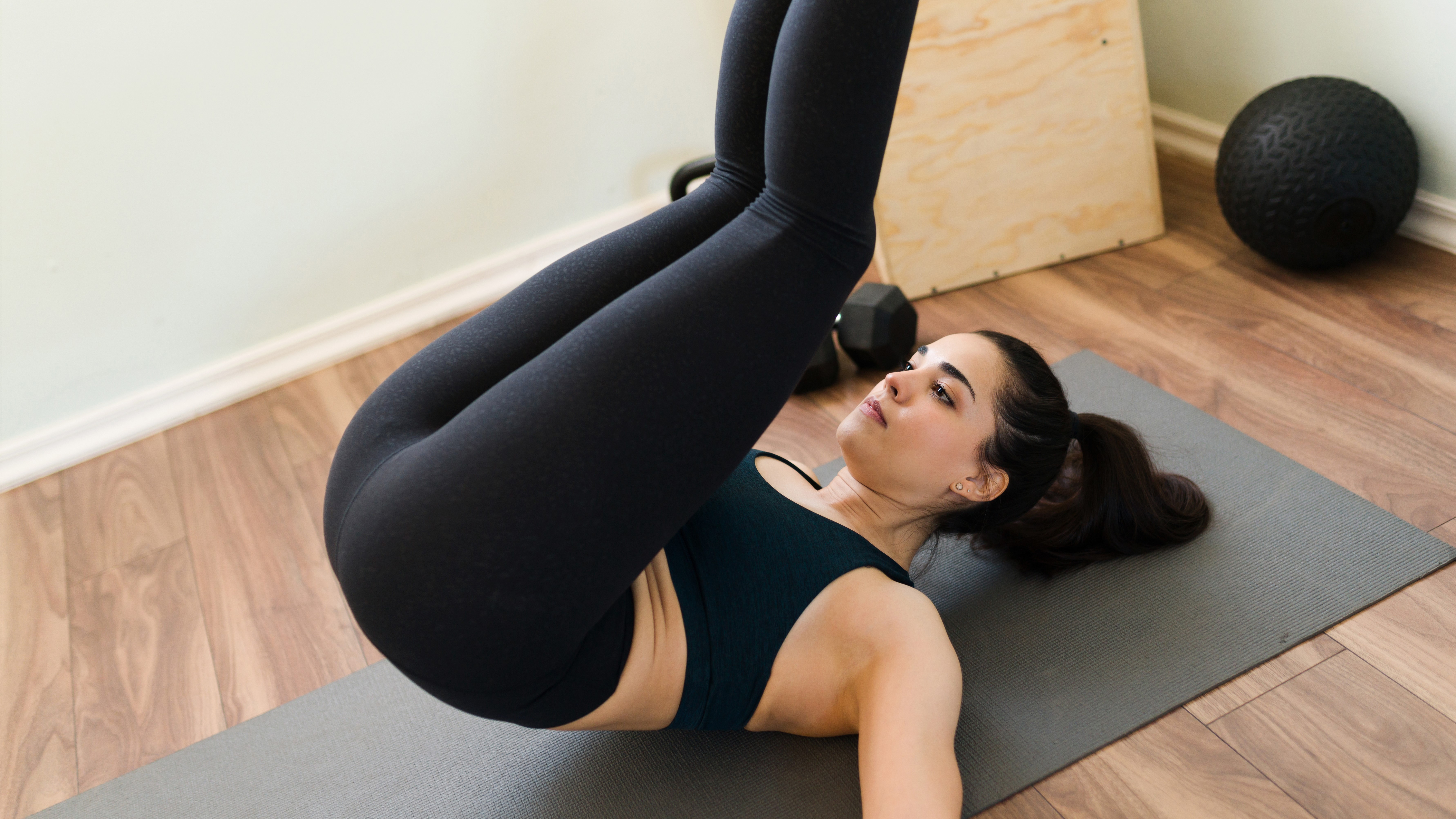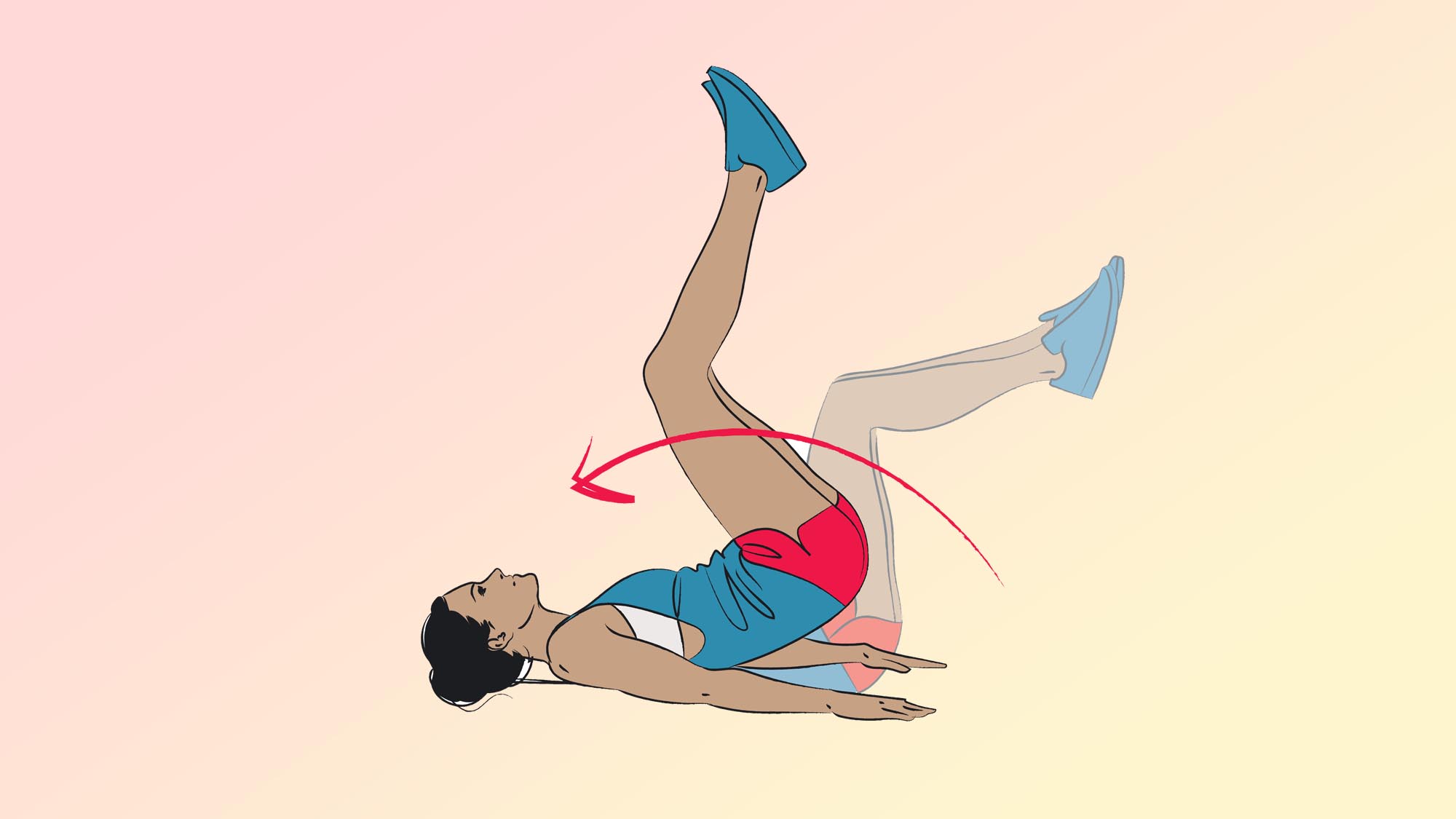I did reverse crunches every day for a week — here’s what happened to my abs
Here’s what I learned about the move

If there’s one exercise I can’t stand, it’s reverse crunches — sure, I know they’re J-Lo’s go-to when sculpting her desirable six-pack, but I just can’t seem to get on with them and despite my best efforts, they never get easier. Yet like every good fitness editor, I put my personal feeling aside and took a deep dive into the exercise for a week, in an attempt to find out more about the benefits of this dreaded move. Are reverse crunches the secret to a stronger core? Read on to find out.
The reverse crunch is included in many of the best ab workouts for a good reason — it gets you an awful lot of bang for your buck. Your abs are made up of three major muscle groups — the rectus abdominis, which are the abdominal muscles that run down the front of the stomach, and are the ones that are visible in a ‘six-pack’. The transverse abdominis, which are the deepest abdominal muscles, and the obliques, which run along the side of the torso. Unlike traditional crunches, reverse crunches target the rectus abdominis and the transverse abdominis.
Of course, strong abdominal muscles are far more than just an aesthetic goal — they can help you run faster, lift heavier weights in the gym, sit with better posture, and protect your spine from injury. As a reminder, what works for me might not be suitable for you and your body, and if you’re new to exercise, or you’re returning to exercise following an injury, it’s a good idea to speak to your doctor, or a personal trainer, before undertaking a new routine.
How to do a reverse crunch

To do a reverse crunch, start by lying on your back, with your lower back, head and neck pressed into the floor. Bend your legs at the knee, press your feet into the mat, and engage your core, thinking about sucking your belly button into your spine.
Keeping your knees bent, inhale, and raise your legs, hips, and bottom off the mat. Pause at the top of the movement, using your core to keep your hips raised off the mat. Your head and neck should stay imprinted on the mat. As you exhale, lower your hips back to the mat. That’s one rep.
Here’s more on how to do a reverse crunch, the benefits, and the modifications to try.
I did reverse crunches every day for a week — here’s what happened
I worked my core, hard
Reverse crunches are an intermediate-level ab exercise, and after my first day of doing 100 reps of the move, I could see why. When doing reverse crunches, it’s important that the move comes from your core, and that you’re not using momentum to rock your hips up off the mat. I found as I got tired, I was guilty of this, so broke the move down into five sets of 20 reps, with a minute break in between to re-set.
Sign up to get the BEST of Tom's Guide direct to your inbox.
Get instant access to breaking news, the hottest reviews, great deals and helpful tips.
Speaking to a personal trainer beforehand, she advised me to only lift my hips and glutes as far as I could with control — you shouldn’t be aiming to get your entire lower back off the mat. If you struggle to lift your hips at all, start with toe taps to work on your core strength, she suggested.
I tried (and failed) to mix things up
After a few days of standard reverse crunches, I decided to follow in J-Lo’s footsteps and add a twist to the top of the movement to really work into my obliques. This one really worked my abs hard, and I returned for more the next day, where I added a Pilates ball to the mix, squeezing the ball between my knees at the top of each crunch.
On the final day of this challenge, I tried and failed, to straighten my legs during my reverse crunches. It might be my super-tight hamstrings from marathon training, or that I just wasn’t ready to skip ahead to this more advanced variation, but I only managed about 30 reps before returning to the bent-legged version.
A personal trainer told me to think about my form
As mentioned above, I asked a friend to take a look at my form during this challenge, and she said I had a tendency to use momentum to roll my hips up and off the mat. She told me that by slowing down, I’d increase the time spent under tension — this refers to the time a muscle is held under strain or tension during a workout. If you want to gain muscle, time under tension is important.
I hate them a tiny bit less
Of course, a week isn’t long enough to physically see any changes in the body. If you are hoping to build visible abs, you’ll need to think about your body fat percentage, not do endless crunches — here’s how to calculate your body fat percentage, and why it matters. Yet nearly 700 reps later (I admit I gave up early on day five), I have learned to love the move a tiny bit more than I did a week ago — when done with proper form, they really work the core hard. I’m relieved I don’t have to do 100 tomorrow morning, though.
Looking for more weird and wonderful workout inspiration? Here’s what happened when fitness writer Sam did 80 sprawls every day for a week, plus, forget Russian Twists as these 5 exercises work your core just as hard.

Jane McGuire is Tom's Guide's Fitness editor, which means she looks after everything fitness related - from running gear to yoga mats. An avid runner, Jane has tested and reviewed fitness products for the past five years, so knows what to look for when finding a good running watch or a pair of shorts with pockets big enough for your smartphone. When she's not pounding the pavements, you'll find Jane striding round the Surrey Hills, taking far too many photos of her puppy.
